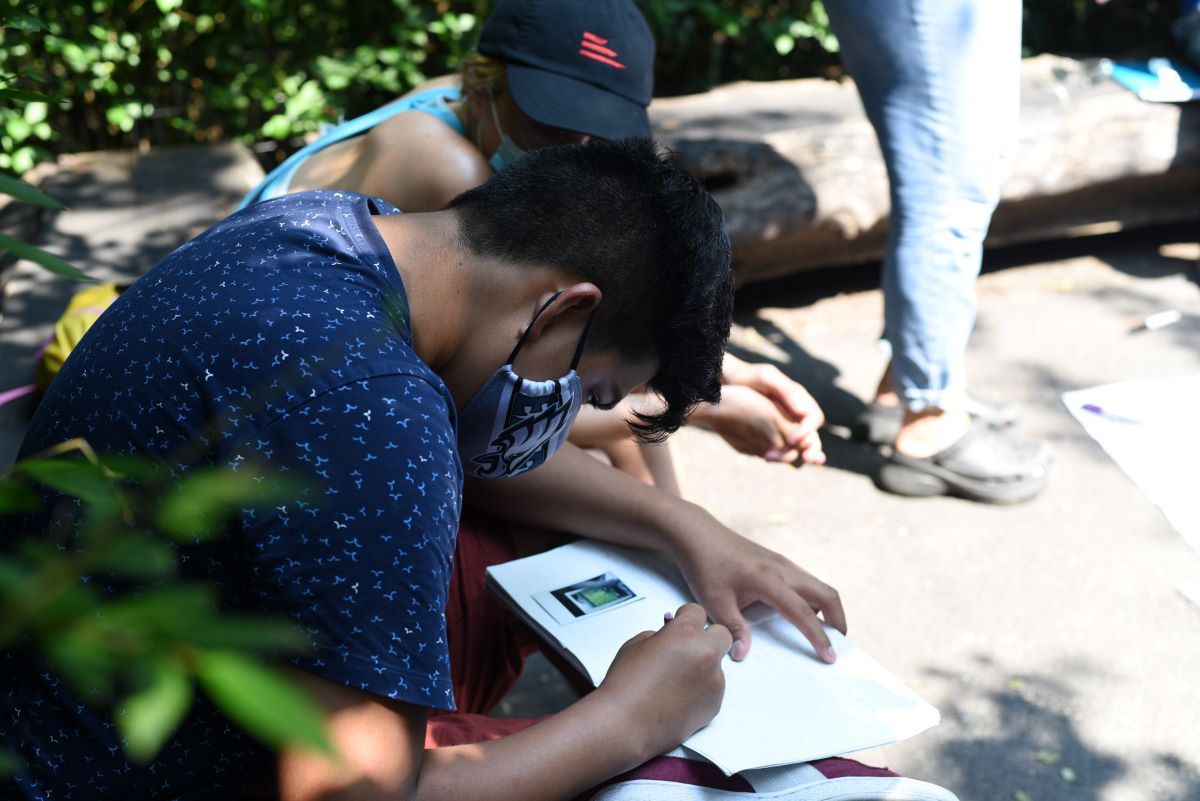What is TR@TC Citizen Scientist?
TR@TC Citizen Scientist is an interdisciplinary program that engages teachers, graduate students, and NYC public school students in project-based learning. Our approach is rooted in an iterative inquiry process and aims to provide all members of the learning community with the opportunity to learn, explore, and grow.
Each year, teachers from across NYC collaboratively design and enact a curriculum that engages students in scientific fieldwork and empowers student voice and curiosity. By joining the Citizen Scientist community, teachers have the opportunity to build collaborative relationships, as well as to design and implement ambitious project-based curriculum as they explore how various teaching and learning practices play out with their students.
For pre-service teachers, Citizen Scientist is an opportunity to learn how to engage with, co-create, and understand project-based curriculum in order to think about the relationship between design and implementation. Then in the summer, residents co-teach alongside the Instructional Team intending to explore and develop their own teacher identity and practices.
When high school students join Citizen Scientist in the summer, they investigate the health of NYC waterways by collecting, analyzing, and synthesizing data. As they iterate upon these scientific practices, students deepen their understanding of how ideas fit together, develop skills, and build the language to participate in meaningful conversations within the scientific community.

STEM+C
TR@TC Citizen Scientist provides NYC high school students with an equitable opportunity to engage in real world applications of science. Over the course of the three weeks, students participate in cycles of data gathering and analysis that lead to successively deeper understandings of concepts related to their understanding of the health of the NYC watershed. Students experience work that mirrors the work that scientists do, and as a result, build confidence in STEM knowledge, language, and skills.
While our curriculum is centered around the student experience, the design and implementation of Citizen Scientist encourages educators to think about ways of prioritizing inquiry-based learning. New and experienced teachers create space for student curiosity and encourage students to co-construct new understandings about the world. They explore ways of connecting students to real world STEM experiences.

Citizen Science
Our program engages school communities in citizen science. We work collectively to care for NYC waterways by monitoring water quality, removing and assessing waste, and sampling macroinvertebrates and fish. As teachers and students work together to collect and analyze data at various sites around NYC, we better understand the state of our urban environment and can find ways to contribute to improving its health.
Our work connects us to local waterways and invites us to recognize that we all play a part in the health and well-being of the people and environment around us. In the TR@TC Citizen Scientist experience, the questions we explore include the following:
By investigating the health of NYC waterways, we explore issues that are directly related to the environmental health of our local neighborhoods and come to understand the role that we can play to positively contribute to where we learn, work, and live.
Through our partnerships with community organizations, we learn the value of sharing our work with community partners who monitor the health of our community and are able to add to a wider data set. We think about the people we know in our neighborhoods as some of the most important audience members with whom to share our work.
We recognize our interdependence with others and that regardless of where we physically reside, we must be mindful of our decisions on both a local and global scale. Our collaborative efforts with NYC Parks Department and Hong Kong University are examples of ways we have worked to broaden our impact.
We recognize that it isn’t one person's big change that makes a difference. It’s everyone taking small steps that contribute towards the health of our environment. Through our work, we deepen our understanding of how we are connected to one another and to our environment.